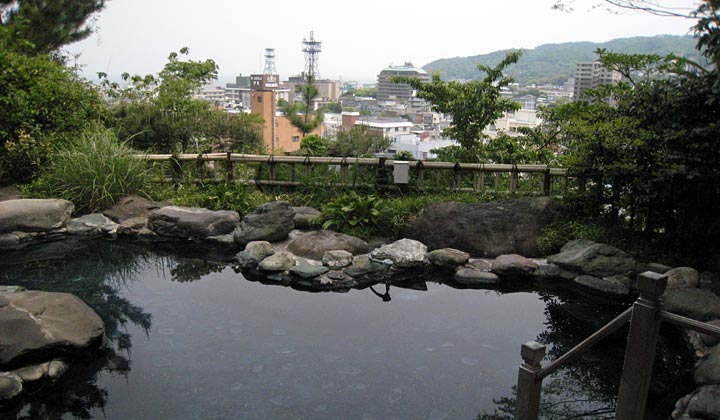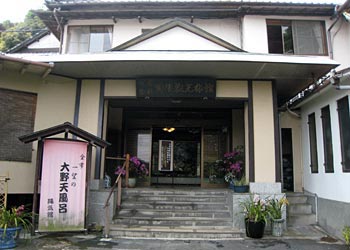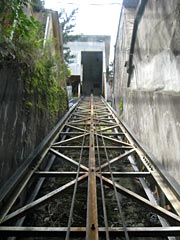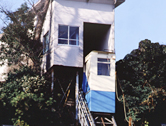- Izu Peninsula top
- General
- Earthquake and volcano
- Too many deer in Izu
- East
- Ito - its old buildings
- Anjin = Wlliam Adams and Ito
- Religious Charisma Nichiren
- Washtub race
- Yokikan - Spa ryokan
- Minami-Kaikisen: Auberge
- Ike and its paddy fields
- Summer has come!!!
- Inatori - fish, spa and more
- Central
- Banjo Waterfall
- Mount Amagi
- Shuzenji - old spa town
- Arabashiri - Bandai-Jozo
- Oomi Land - heart of Izu
- West and south
- Heda on the west coast
- Toi - Gold mine
- Matsuzaki - namako wall
- Izu-no-Chohachi - Plasterer
- Kumomi on the west coast
- Shimoda - Tojin-Okichi
- Cottage life
- Fishing in Usami
- Start of my fishing life
- Training camp in Amagi
- Cottage life / music&drinks
- Party in Izu - part 2
- Party in Izu - part 1
- Sunday morning concert
- Ice and snow in Amagi
- My summer house
- Restaurant and eatery
- Let’s eat Izu-Deer!
- Isui-an - exquisite soba
- Sugizen - big prawn fry
- Sayang - Bali restaurant
- Restaurant Tanaka
Yokikan - Spa ryokan with a cable car
Yokikan is one of the oldest spa ryokans (*) existing in Ito and celebrates its 100 years jubilee this year. Yokikan has been always on my mind, because it has a small cable car connecting the main building with the annex built on the steep slope.
There is an open-air bath on top of the slope and it is open to non-overnight visitors between 11:00 and 15:00. As I have my country villa in the neighborhood, I do not have to stay in ryokans in Ito. But, I am eager to experience diverse hot spring facilities. Therefore I welcome the recent trend for spa ryokans to open their thermal baths to everyone at reasonable price.
- (*)
- A ryokan is a Japanese style hotel. Most of them have traditional wooden buildings and guest rooms are floored with tatami mats. Guests are traditionally provided with obligatory dinner and breakfast.

Open-air bath at Yokikan
Ito has abundant hot spring water. With its 32 tons of up to 68°C hot spring water yield per minutes Ito is counted among the thermal-water richest spas in Japan. Therefore, it is very natural that Ito spa is famous since long. The first reference to a bathing facility in Ito dates back to 1598 before the establishment of Tokugawa Shogunate (1603). During the Edo Period the hot spring water of Ito was transported to Edo (present Tokyo) and appreciated by Shogun and many other people because of its curing effect.
After the Meiji Restoration (1687) Ito gradually developed as spa resort. At the beginning of the 20th century, Ito had already 230 wells centered on the left bank of Matsukawa-river: Kusumi and Shishido districts. Thermal water welled out from all springs and no pumping was needed. The opening of railway to Ito in 1937 accelerated the digging of new springs with modern machines and the new spa area spread upwards along Matsukawa-river to Oka and Kamata districts. The total number of wells exceeded 700.
However, this brought about over-pumping and over-pumping resulted in the stagnation of total thermal water yield and the decrease of water temperature in the lower reaches of Matsukawa-river such as Kusumi. In the 1960s people came to a solution and now there is a strict guideline as to the pumping volume of each well.
After the Meiji Restoration (1687) Ito gradually developed as spa resort. At the beginning of the 20th century, Ito had already 230 wells centered on the left bank of Matsukawa-river: Kusumi and Shishido districts. Thermal water welled out from all springs and no pumping was needed. The opening of railway to Ito in 1937 accelerated the digging of new springs with modern machines and the new spa area spread upwards along Matsukawa-river to Oka and Kamata districts. The total number of wells exceeded 700.
However, this brought about over-pumping and over-pumping resulted in the stagnation of total thermal water yield and the decrease of water temperature in the lower reaches of Matsukawa-river such as Kusumi. In the 1960s people came to a solution and now there is a strict guideline as to the pumping volume of each well.

Entrance of Yokikan

Map of Ito around 1930; Yokikan was at the time in Shishido district (

Cable to pull up the gondra.
Fortunately, we were alone and did not have to worry about other guests. The thermal water was, like in other thermal baths in Ito, transparent and scentless. Though the view from the bath was not especially beautiful, it was very relaxing because it was in the nature and allowed us a wide angle of viewing.
I found it strange that the wet stones of the thermal bath looked dark purple. An employee of Yokikan explained me that it is because of the reflection of light against green leaves of trees and the color deepens when trees turn green in spring. I could not believe it easily.
